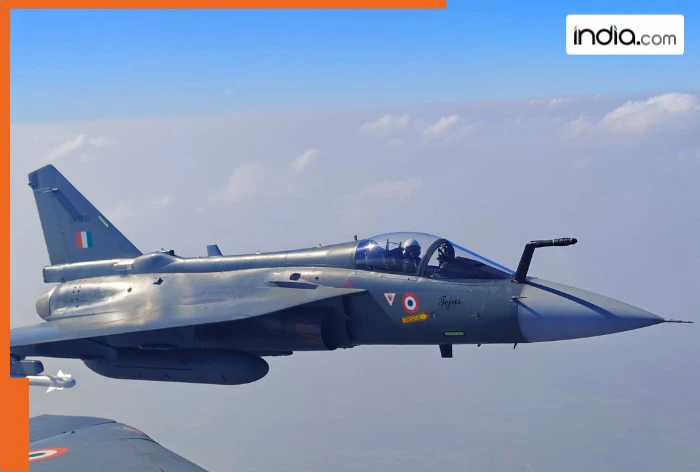Operation Sindoor has proved the prowess of the India Defence Force in front of the world. Now, India is planning to strengthen the IAF even more, advancing the country’s self-reliance in defence manufacturing.
For this, the Indian Government has approved Rs 67,000 crore deal for the procurement of 97 additional Tejas MK-1A fighter jets in the financial year 2026-27. This contract which is likely to be finalised by the Cabinet Committee on Security (CCS), will strengthen the role of indigenously developed Light Combat Aircraft (LCA) Tejas fighter jet as the backbone of the IAF.
As per a report published by Moneycontrol, the deal which is following the 48,000 crore contract which was signed back in February 2021 for 83 Tejas MK-1A jets, will induct a total of 180 fighter jets in the IAF fleet. This will significantly enhance IAF’s combat capabilities.
It is worth noting that the Tejas MK-1A is manufactured by HAL and is being designed by the Aeronautical Development Agency (ADA, is a modern multirole fighter aircraft which is loaded with modern technology, Active Electronically Scanned Array (AESA) radar, and beyond-visual-range (BVR) missile capabilities. These features of the Tejas makes a perfect replacement of ageing MiG-21, Jaguars.
Notably, the Tejas Mk-1A is an upgraded variant of original Mk-1, which has 65 percent indigenous content. It is loaded with an electronic warfare suit, self-protection jammers, and enhanced maintainability, offering powerful performance as compared to its competitors such as Sino-Pakistani JF-17 Thunder. The per unit cost of the Tejas MK-1A is around Rs 600 crore.
India’s Tejas fighter jet program, a significant achievement in domestic aerospace engineering, has encountered production delays. The initial delivery of the Tejas Mk-1A, initially scheduled for March 2024, has been pushed back to July 2025 due to certification processes and supply chain problems related to GE Aerospace’s F404 engines. Hindustan Aeronautics Limited (HAL) now aims to deliver the first aircraft by July 2025 from its Nashik facility, with a projected delivery of 16 jets in fiscal year 2024-25 and completion of the 83-jet order by 2028-29.
To meet the IAF’s growing demands, HAL has expanded its production capacity. With two production lines in Bengaluru capable of producing 16 jets annually and a third line in Nashik set to add capacity for eight more, HAL aims to manufacture up to 24 Tejas Mk-1A jets per year by 2026. However, concerns remain about HAL’s ability to meet both domestic and potential export commitments, especially with interest from countries like Argentina, Nigeria, Egypt, and the Philippines.
HAL, in order to meet the Indian Air Force’s growing demand, has expanded its production capacity. Two of its HAL’s lines are operating in Bengaluru and are capable of producing 16 fighter jets every year. The third line in Nashik will have the capacity of 8 fighter jets. Notably, HAL is planning to manufacture
The Rs 67,000 crore deal is not just a military acquisition but a catalyst for India’s aerospace industry. The Tejas program involves over 500 Indian companies, including MSMEs, fostering job creation and technological innovation. The government’s recent shift to competitive bidding for defence contracts, as announced by Defence Secretary Rajesh Kumar Singh, is expected to further integrate private players like Larsen & Toubro and Dynamatic Technologies into the Tejas supply chain, enhancing the ecosystem’s vibrancy.
